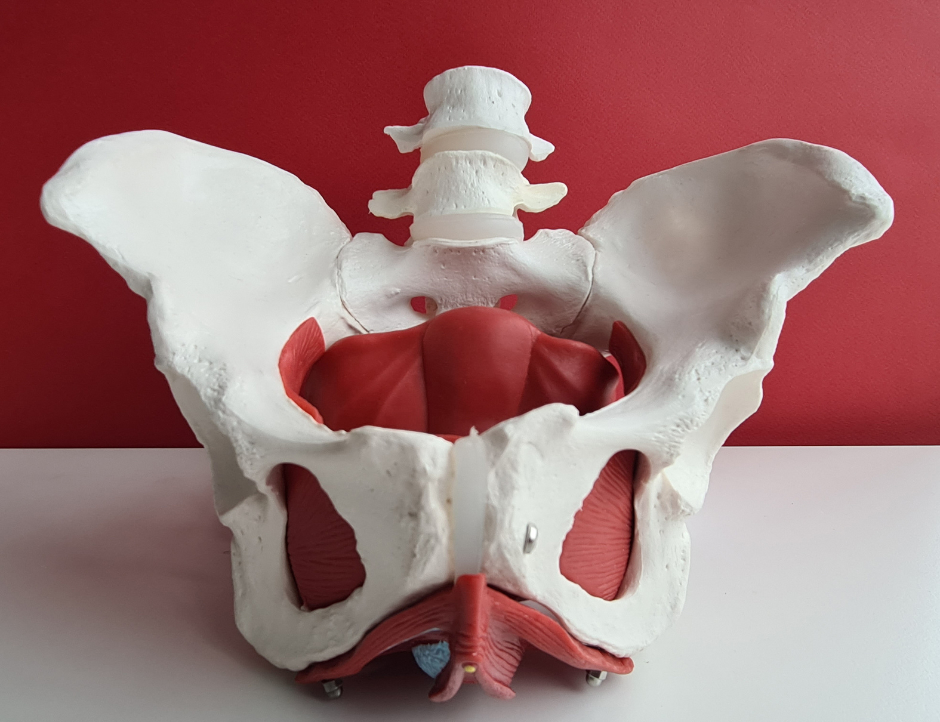Pelvic Floor 101: Why Kegels Alone Are Not Enough
For years, women experiencing bladder leaks, prolapse, or post-childbirth discomfort have been told one thing over and over: “Do your Kegels.” These exercises of the pelvic floor muscles have been widely promoted as the go-to solution for everything from urinary incontinence to improved sexual function. And, yes, they are an important part of pelvic floor health. But here’s the truth: Kegels alone aren’t enough.
While they can play a valuable role in keeping the pelvic floor functioning well, many women find they don’t fully resolve symptoms—or worse, they can sometimes make the muscles feel tighter or more uncomfortable. It can be very discouraging.
This can happen because the pelvic floor isn’t just about squeezing muscles. It’s about coordination, breath, posture, and whole-body function.
In this article, we’ll explore what the pelvic floor really needs to function at its best, and why a broader approach can offer better, more lasting results.

What Are Kegels?
Kegels are exercises that involve repeatedly contracting and relaxing the muscles of the pelvic floor. They’re often used to improve bladder control, support postpartum recovery, and enhance sexual function. Kegels can be done by identifying the muscles you’d use to stop urinating midstream, then gently squeezing and lifting those muscles for a few seconds before releasing.
These exercises were named after Dr. Arnold H Kegel, an American gynecologist, who developed the idea in the late 1940s.
The Pelvic Floor
The pelvic floor is a group of muscles and connective tissue that sit like a hammock at the bottom of your pelvis. These muscles support your bladder, uterus, and rectum and play a major role in urination, bowel movements, sexual function, childbirth, and even breathing and posture.
Think of the pelvic floor as your body’s foundation for core stability and organ support. It works in sync with your diaphragm, deep abdominal muscles, and lower back to stabilize the spine and maintain internal pressure. When this system is out of balance—whether from trauma, posture, stress, pregnancy, or aging—pelvic floor dysfunction can occur.
Common signs of pelvic floor problems include:
- Urinary incontinence
- Pelvic organ prolapse
- Pain with intercourse
- Pelvic pressure or heaviness
- Constipation
- Core weakness
Why Kegels Are Not a Cure-All
A Kegel an exercise in which you voluntarily contract the pelvic floor muscles—basically, a squeeze and lift. But here’s the problem: not everyone needs strengthening. In fact, many women are already holding tension in their pelvic floor without realizing it.
If you’re constantly clenching due to stress, posture habits, or trauma, your pelvic floor may be too tight (hypertonic), and adding more contractions can actually make the discomfort worse. In these cases, the muscles need to learn to relax, not contract more.
Other limitations of Kegels:
- They don’t teach timing or coordination, which is essential for preventing leaks or supporting the core during movement.
- Many people perform them incorrectly—using the wrong muscles or overusing the glutes, inner thighs, or abdominals.
- They’re often prescribed without assessment, leaving many women doing the wrong thing for their specific issue.
Simply put, Kegels are a tool, not a solution.
Coordination Over Clenching
A healthy pelvic floor isn’t just strong, it’s responsive. It needs to contract when we cough, lift, jump, or sneeze, and relax when we urinate, defecate, or have sex. When the muscles don’t fire at the right time—or stay too tight—unpleasant symptoms can develop.
Imagine a symphony orchestra; if the pelvic floor is one section of instruments, it can’t carry the whole tune on its own. It needs to stay in rhythm with the diaphragm, abdominal muscles, and deep back muscles. True pelvic health is about coordination and timing, not brute strength.
Breath: The Missing Piece
The pelvic floor and the diaphragm move together like a piston system. When you inhale, the diaphragm moves down, and the pelvic floor gently lengthens. When you exhale, the diaphragm lifts, and the pelvic floor naturally recoils upward.
Many people unknowingly hold their breath during exercise, stress, or even Kegels, disrupting this natural coordination. Over time, this can lead to dysfunctional pressure patterns, contributing to issues like incontinence or prolapse.
A simple exercise:
- Sit or lie down comfortably.
- Inhale through your nose and feel your ribs expand and pelvic floor soften.
- Exhale slowly and feel your pelvic floor gently lift.
- Repeat 5–10 times, tuning into the rise and fall of this internal system.
This type of diaphragmatic breathing reconnects your pelvic floor to its core support system.
Posture, Movement & Daily Habits
Your posture shapes your pelvic floor health more than you might think. Prolonged sitting, slouched alignment, and tight hips or hamstrings can lead to chronic tension or weakness in the pelvic region.
Try this:
- Avoid tucking your pelvis under when sitting; sit on your pelvic bone, the bottom part that is often referred to as the sitz bones.
- Alternate between sitting and standing during long work hours.
- Incorporate natural movements like squatting, walking, and hip-opening exercises to keep pelvic muscles functional.

The pelvic floor needs dynamic, whole-body movement. It doesn’t thrive in isolation. That’s why fitness routines that include functional movement patterns (like squats, lunges, and twisting) with good alignment and breath integration are often more effective than isolated squeezing.
However, if you are unaccustomed to this type of exercise, or if you are having severe symptoms, then some of these movements can make matters worse. That's why we always recommend that you visit a pelvic floor specialist to find out the type of exercise that will be most appropriate for you.
When to See a Pelvic Floor Physiotherapist
If you’ve been diligently doing your pelvic floor exercises with little improvement, or if you're experiencing symptoms like:
- Bladder leaks
- Pelvic heaviness
- Pain during sex
- Difficulty fully emptying the bladder or bowels
- Pain in your lower back, hips, or sacrum
…it’s time to see a women's health physio.
Book A Women's Physio Consultation Now
These specialist women's physiotherapists are trained to assess internal and external pelvic floor function and to create a customised plan to restore balance. Treatment may include:
- Manual release techniques (internal or external)
- Postural and movement retraining
- Breath and core coordination exercises
- Biofeedback or neuromuscular retraining
You don’t need to wait until your symptoms are severe. Early support leads to better outcomes.
Supporting Pelvic Floor Health Holistically
Pelvic health is multifaceted, which means the best care looks at you as a whole person, not just one muscle group.
Additional tools that support optimum pelvic floor function include:
- Yoga or Pilates, with awareness on breath and pelvic alignment
- Somatic practices like TRE (tension & trauma release exercises) to release stored stress
- Nutrition that supports bowel regularity (hydration, fiber, magnesium)
- Bodywork, such as myofascial release or osteopathy
- Stress management, as chronic stress creates tension patterns in the pelvis
The more connected to your body you feel, the more ease your pelvic floor has to function naturally.
Reclaiming Your Pelvic Health
Kegel exercises aren’t bad—far from it. Pelvic floor exercises, when done correctly, can promote core stability and ease a host of women's health symptoms, including incontinence and prolapse.
But they’re only one piece of the puzzle. A healthy pelvic floor requires balance: strength, yes, but also mobility, breath, awareness, and support. Understanding how this system works can help you feel more empowered in your body, whether you're navigating postpartum healing, preparing for menopause, or simply seeking to move with more comfort and confidence.
If your current routine isn’t working—or if you’re feeling unsure—don’t go it alone. A pelvic floor physiotherapist can help you reconnect with your body and find a solution that actually fits your needs.
Because pelvic health isn’t just about muscles—it’s about you.
Book A Women's Physio Consultation Now
For advice on your pelvic health questions, call Magdalena on 07877 017 936 or drop PelviCare an email. Alternatively, you can book an appointment online.
PelviCare Women's Health Physiotherapy is located on the border of Greenwich and Deptford in London, serving women across South London, East London, Essex, Kent and beyond.
Recommended Articles:
How Can Women’s Health Physiotherapy Help My Pelvic Floor?
How Women’s Health Physiotherapy Can Help with Urinary Incontinence
How do you Know if you Need Pelvic Floor Physio?
